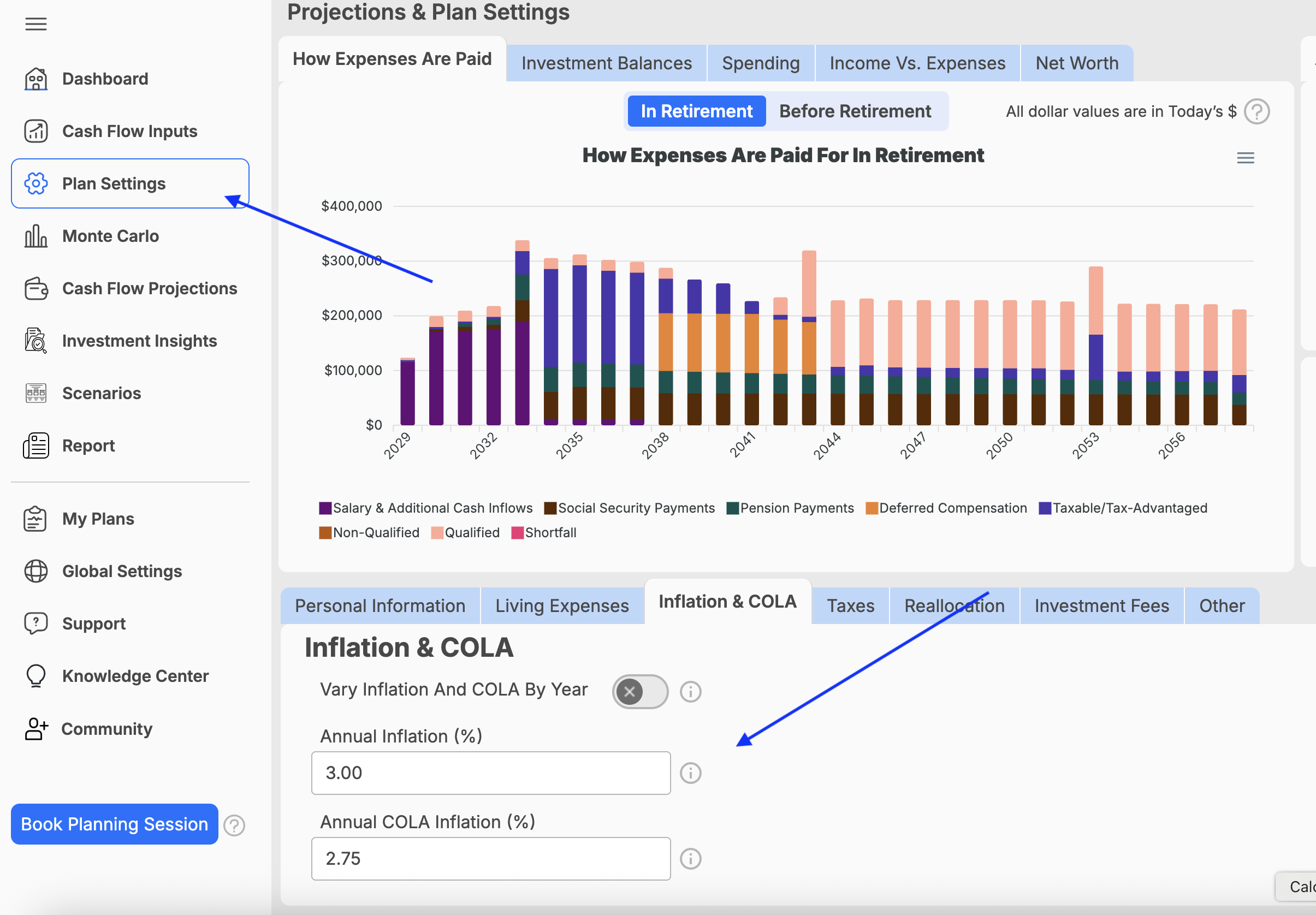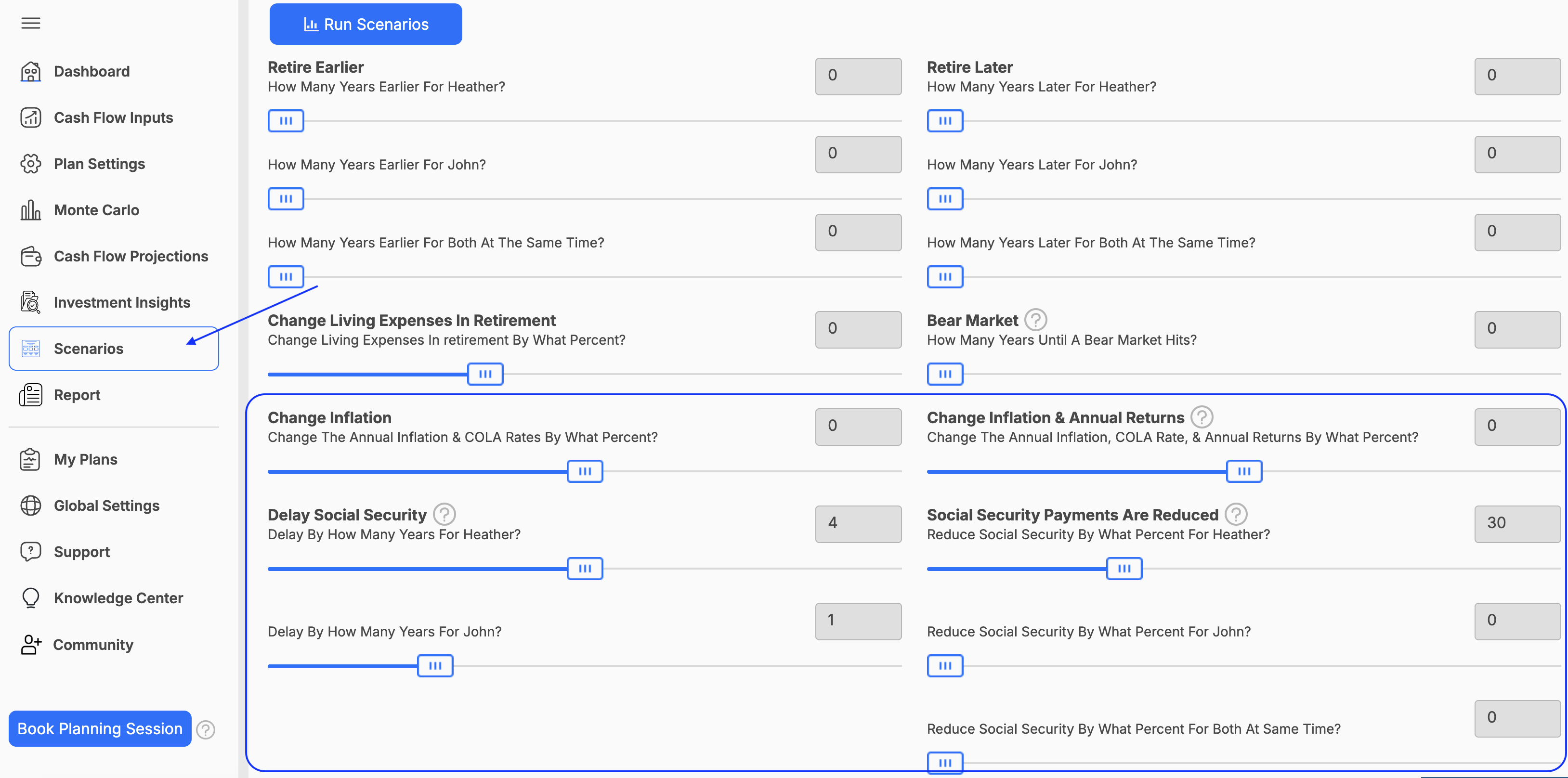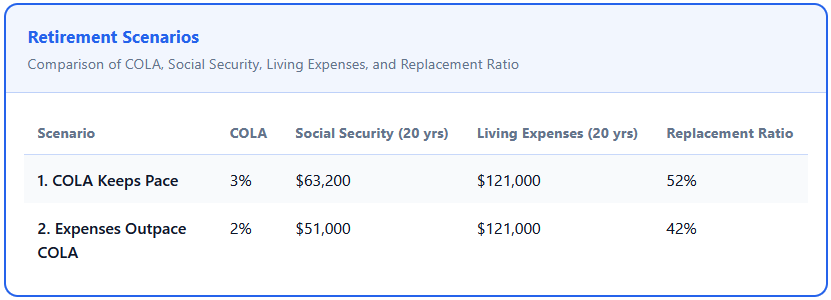Key Points
- Social Security benefits will rise by 2.8% in 2026, giving the average retiree an extra $56 per month beginning in January.
- The Social Security trust fund faces potential shortfalls by 2033, with projections showing it may only cover about 81% of scheduled benefits.
- Retirees should plan proactively, using tools like WealthTrace to model inflation, COLA, and spending scenarios to protect against rising costs and benefit uncertainty.

The Social Security Administration has announced a 2.8% cost-of-living adjustment (COLA) for benefit payments beginning in January 2026. For the average retiree, this equates to an average increase of $56 per month.
This increase will apply to nearly 71 million Social Security beneficiaries, while approximately 7.5 million recipients of Supplemental Security Income (SSI) will begin receiving the higher payment on December 31.
The announcement was slightly delayed due to the recent federal government shutdown.
Why 2.8% and How It’s Funded
This adjustment is determined annually based on inflation metrics.
For context:
-In 2025, the COLA was 2.5%
-In 2024 it was 3.2%
-In 2023 it jumped 8.7% amid a spike in inflation
The more modest increase for 2026 reflects the easing of inflationary pressure. Funding for the Social Security trust fund comes from payroll taxes on wages up to a cap (which will rise from $176,100 in 2025 to $184,500 in 2026). The COLA affects both retirement and disability beneficiaries.
Will Social Security Run Out of Money?
Although the program remains fully funded for now, the Social Security trust fund faces long-term financial strain. According to the most recent trustees’ report, the fund that pays retirement and disability benefits could become unable to pay full benefits starting around 2034.
At that point, unless Congress acts, Social Security would still have enough incoming tax revenue to cover roughly 81% of scheduled benefits.
The potential shortfall stems from demographic trends. More retirees, fewer workers, and longer life expectancies are putting strain on the pay-as-you-go system. Lawmakers have proposed various solutions, from raising payroll tax limits to adjusting benefits, but no comprehensive reform has yet passed.
For retirees and near-retirees, this uncertainty underscores the importance of personal savings, diversified income sources, and scenario testing within a retirement plan.
Is It Enough?
While every bump in benefits helps, many retirees feel the increase won’t fully address the squeeze.
Polling by the AARP shows that only about 22% of Americans aged 50+ believe a ~3% COLA is adequate to keep pace with rising costs, while 77% disagree. That view holds true across political affiliations.
What You Can Do
1) Run scenarios in WealthTrace. Model varying benefit amounts, inflation assumptions, and spending levels.
2) Don’t assume COLA alone covers your cost increases. If your expenses are rising faster than ~3% per year, your plan may need adjustment.
3) Explore delaying benefits. Taking the benefit later can raise your monthly payment.
4) Keep an eye on inflation and housing/health-care costs. These are often the fastest rising categories.
5) Review your asset and income mix. If you rely heavily on guaranteed income (like Social Security), make sure your portfolio or other assets can pick up the slack.
-

You can adjust the inflation and COLA assumptions for your financial plan in WealthTrace by going to Plan Settings. You can apply a single rate for the entire plan or adjust it year by year.

You can use WealthTrace to run different scenarios and see how adjustments, such as changing the inflation rate, delaying Social Security, or receiving reduced benefits, impact the overall success of your plan.
Running Scenarios in WealthTrace
We ran two scenarios in WealthTrace to show how Social Security benefits that don’t keep up with inflation can reduce your purchasing power over time.
Baseline assumptions:
Social Security benefits (2025): $35,000
Living expenses (today): $67,000
Inflation: 3%
COLA: varies by scenario

Scenario 1: COLA Keeps Pace When Social Security keeps up with inflation, purchasing power stays stable. Benefits cover roughly half of expenses, and retirement remains sustainable assuming savings or other income bridge the gap.
- Scenario 2: Expenses Outpace COLA If COLA grows slower than inflation, Social Security covers a smaller portion of expenses (42% vs 52%), reducing purchasing power and requiring higher withdrawals from savings or lifestyle adjustments in retirement.
Bottom Line
The 2.8% COLA increase for 2026 offers retirees a modest boost, but it’s clear that cost-of-living adjustments alone can’t guarantee long-term financial stability, especially as expenses like housing, healthcare, and food continue to rise faster than inflation in many areas.
With Social Security’s future funding uncertain, it’s more important than ever to take control of your retirement plan. Use tools like WealthTrace to model different inflation, COLA, and spending assumptions so you can see how small changes impact your income over time. Building flexibility into your plan, through diversified income sources, delayed benefit strategies, and consistent portfolio reviews, can help ensure your retirement stays on track, regardless of how Social Security evolves.
Do you know how important Social Security benefits are to your retirement plan? If you aren’t sure, sign up for a free trial of WealthTrace to build your financial and retirement plan today.